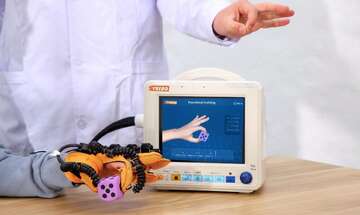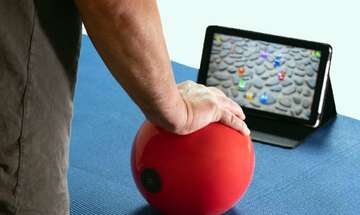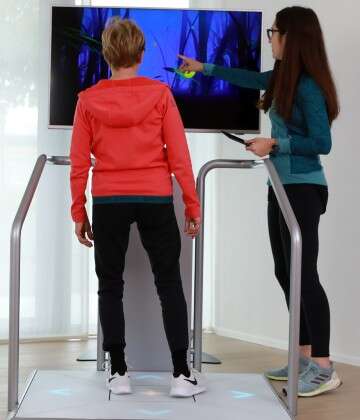Rehabilitation Robotics for Advanced Therapy Session
 images: BIOXTREME ROBOTICS REHABILITATION
images: BIOXTREME ROBOTICS REHABILITATION Bioxtreme’s robotic rehabilitation systems, based on the company’s patent Error Enhancement technology, provide patients and therapists with advanced therapy options and simultaneously save 50 percent on rehabilitation treatment time.
Bioxtreme developed the first prototype for a new robotic rehabilitation system in 2008. The clinical trials, completed in late 2010, were successful, revealing that the system can improve patients’ motor skills by more than 50 percent compared to the control group.
Bioxtreme’s rehabilitation robotics system is designed to perform four therapy tasks to help patients recover function in their upper limbs. The tasks were developed using the clinical data collected with the prototype and based on physical therapy sessions. The system uses a 3D virtual reality technology to deliver various games that motivate patients to achieve better results in rehabilitation. The therapy sessions are only 20 minutes long and done three times a week, which is considerably shorter than sessions in traditional therapy, which typically last one hour and are repeated every day. However, Bioxtreme’s robotic therapy system helps patients make progress very quickly.


DeXtreme, the company’s upper limb rehabilitation system, has been successful in improving patients’ real-life functional performance through efficient therapy programs. The device is expected to drastically save both treatment time and treatment costs.
DeXtreme is currently the only rehabilitation system available on the market that uses the innovative Error Enhancement method. Developed in 2012, the robotic device has shown positive initial results in clinical trials and is expected to be approved by the FDA soon. DeXtreme can measure motor error patterns as they occur, and calculate and apply an optimal set of Error Enhancement forces suitable for different types and levels of disability. When a patient needs to perform a simple task, the robotic arm detects deviations from the ideal movement pattern and applies forces to enhance the patient’s errors, forcing him to instinctively adapt and correct the movement. The beneficial effects of performing the movement are retained by the patient’s central nervous system.
Potential applications of Error Enhancement technology extend far beyond therapy and rehabilitation, to sports training, development of children’s motor skills, motor skill simulation in flight, driving, clinical surgeries, and the military, and music and the arts. The Israel-based company is currently focusing exclusively on the rehabilitation market.

 SEND INQUIRY
SEND INQUIRY









